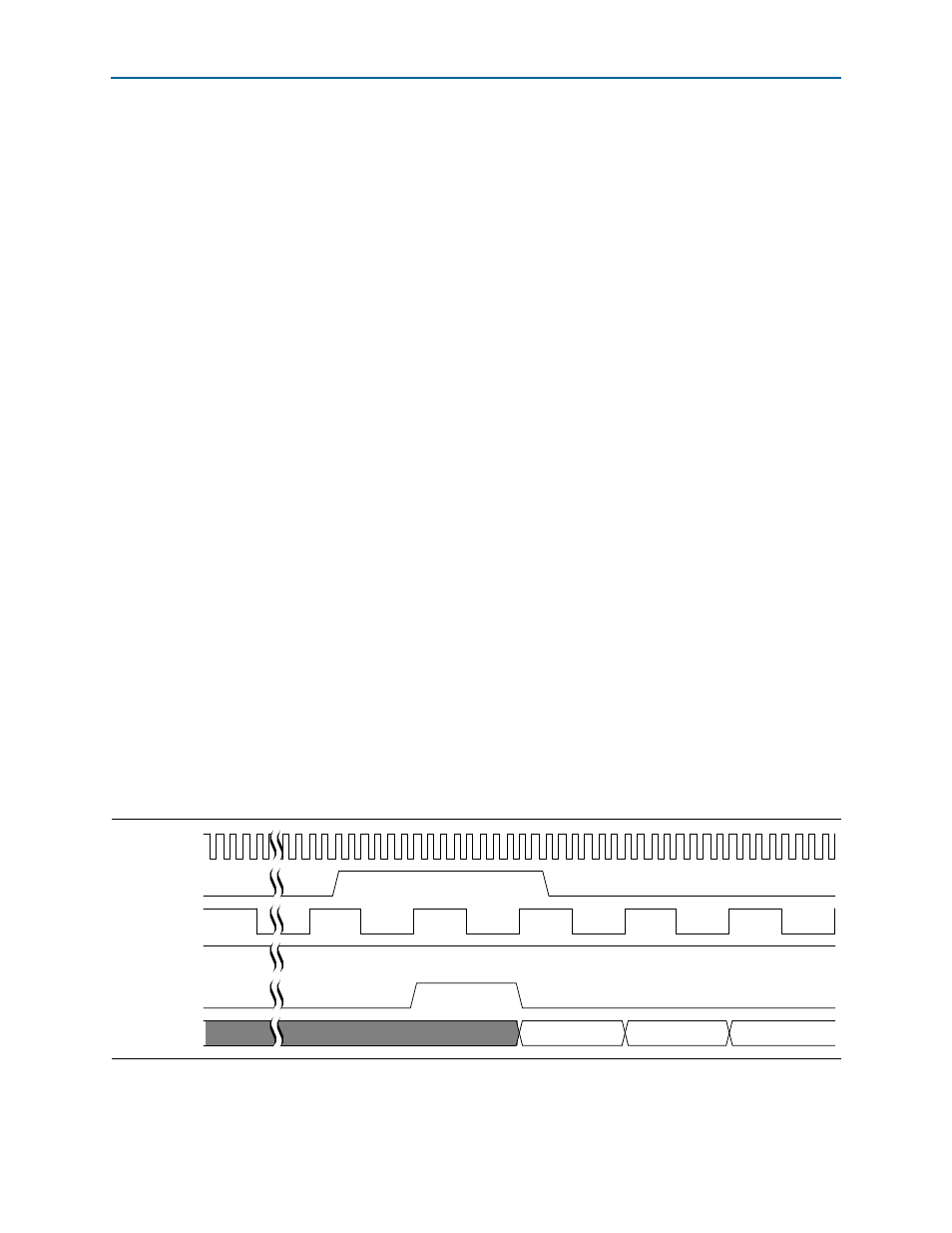Map receiver in synchronous buffer mode, Map receiver in synchronous buffer mode –21 – Altera CPRI IP Core User Manual
Page 53

Chapter 4: Functional Description
4–21
MAP Interface
December 2013
Altera Corporation
CPRI MegaCore Function
User Guide
is not yet asserted, the mapN Rx buffer continues to fill. When it overflows, the new
data overwrites current data in the mapN Rx buffer. Each mapN Rx buffer is
implemented as a circular buffer, so the data is overwritten starting at the current
head of the mapN Rx buffer, that is, starting from the initial data not yet sent out on
the data channel.
FIFO-based communication is simple but does not allow easy control of buffer delay.
The delay through each mapN Rx buffer depends on your programmed threshold
value and the application. Data is not sent to a data channel before the buffer
threshold is reached, so the delay through the buffer depends on the fill level. Each
AxC interface has the same buffer threshold, but each Rx buffer reaches that threshold
independently.
MAP Receiver in Synchronous Buffer Mode
In synchronous buffer mode, each AxC interface has a resynchronization signal,
mapN_rx_resync
. The application that controls the data channel asserts its
resynchronization signal synchronously with the
mapN_rx_clk
clock. After the
application asserts the resynchronization signal, it begins reading data on the
mapN_rx_data[31:0]
data bus for the individual AxC interface.
In synchronous buffer mode, the application should ignore the
mapN_rx_valid
output
signals and hold the
mapN_rx_ready
input signals high. The CPRI IP core does assert
the
mapN_rx_valid
output signals in response to the
mapN_rx_ready
signals. If the
application does not hold the
mapN_rx_ready
input signals high, the CPRI IP core
MAP Rx interface does not function correctly.
For details about the behavior of the individual signals in synchronous buffer mode,
refer to
“MAP Receiver Signals” on page 6–1
.
shows the behavior of the MAP Rx signals in synchronous buffer mode.
In this example, the CPRI line rate is 2457.6 Mbps. The
cpri_rx_start
signal is
asserted for the duration of a single frame, and the CPRI line rate determines the
duration of a basic frame in
cpri_clkout
cycles. At 2457.6 Mbps, a basic frame is 16
cpri_clkout
cycles. At this line rate, as shown in
Table 4–2 on page 4–10
, the
cpri_clkout
frequency is 61.44 MHz. The
mapN_rx_clk
frequency is 7.68 MHz
(oversampling rate 2), approximately 0.125 times the
cpri_clkout
frequency.
Figure 4–10. MAP Receiver Interface in Synchronous Buffer Mode
cpri_clkout
cpri_rx_start
mapN_rx_clk
mapN_rx_ready
mapN_rx_resync
mapN_rx_data[31:0]
